An asparagus fern has delicate, feathery fronds with graceful arches that resemble an asparagus plant. However, despite their name, they are not actually ferns. Instead, they belong to the lily family, hailing from the lush forests of southern Africa. Their leaves resemble the shape of a fern, hence the name.
Asparagus ferns are excellent indoor plants and are surprisingly easy to care for. Whether you’re a seasoned plant parent or just starting your green journey, it will be an excellent addition to your green space.

Image credits: Ksenia Chernaya
What is an Asparagus Fern?
An asparagus fern is an ornamental plant popular for its delicate, feathery, and needle-like foliage. These plants look quite graceful, with their arching stems covered in small, bright green leaves.
They can be easily grown indoors or in gardens, particularly in temperate regions. You’ll often see them in container gardens, hanging baskets at cafes, or as ground cover in shaded areas. Asparagus ferns are relatively low-maintenance plants and can thrive in various conditions.
Quick Facts
Scientific Name: Asparagus densiflorus (most common variety)
Native Range: South Africa
Hardiness Zones: 9 to 11
Height: Can grow up to 2 feet
Bloom Time: Produces small, white flowers in spring
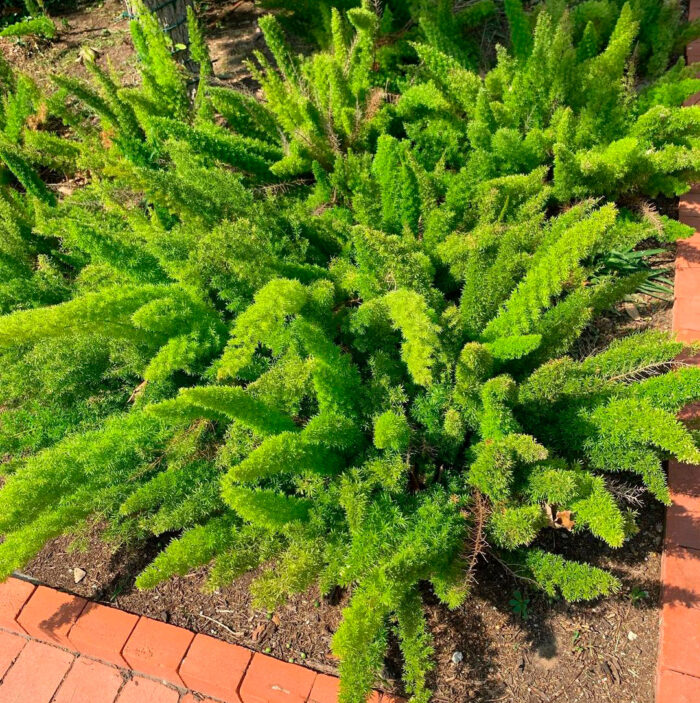
Image credits: daniela_rj98
Different Types of Asparagus Ferns
Asparagus ferns have several species and cultivars, each with its own unique characteristics. These are the four most common asparagus fern types:
Asparagus densiflorus (Foxtail Fern)
Asparagus densiflorus, commonly known as the foxtail asparagus fern, has a vertical, bushy growth pattern. This variety has densely clustered, needle-like leaves that look like a fox’s tail.
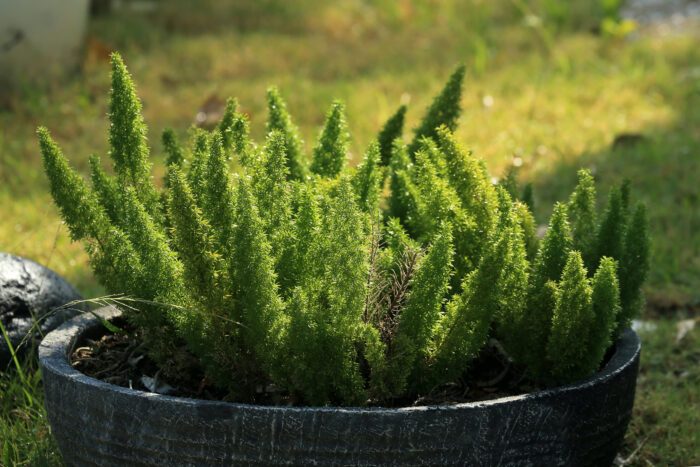
Image credits: Jeffry Surianto
Asparagus setaceus (Common Asparagus Fern)
Asparagus setaceus, known as the common asparagus fern, lace fern, or Asparagus plumosus is a plant of delicate charm. It has lacy, fine-textured foliage that makes a stunning addition to bouquets and flower arrangements. It’s also a favorite choice for hanging baskets as its cascading fronds drape gracefully.
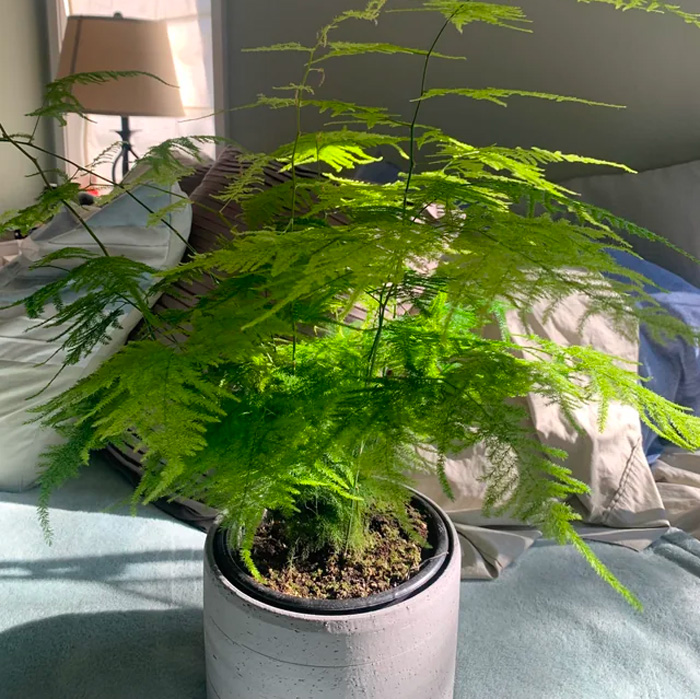
Image credits: yellondblu
Asparagus retrofractus (Basket Asparagus Fern)
Asparagus retrofractus has a cascading habit, making it the perfect choice for hanging baskets and elevated displays. You can distinguish this variety by its slender and wiry stems and needle-like leaves.
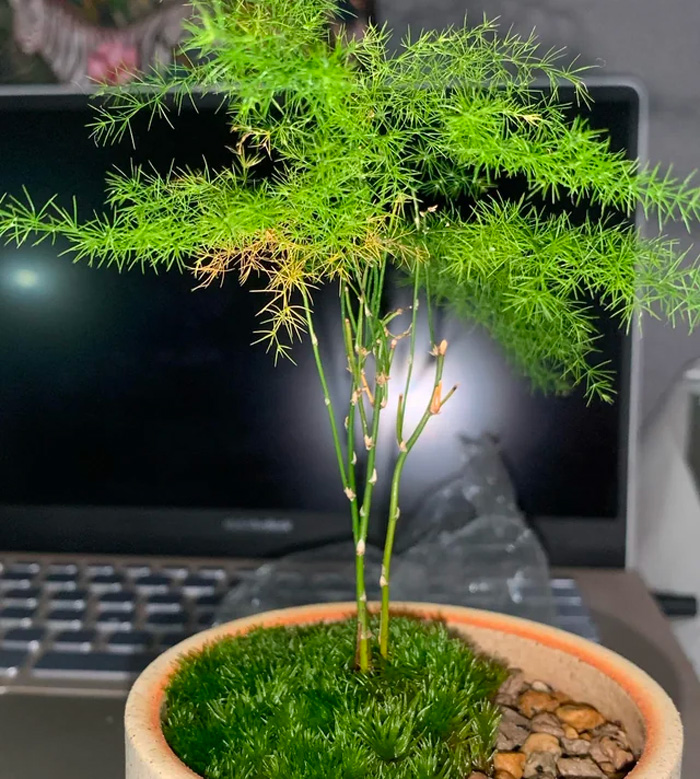
Image credits: SquirrelBeneficial56
Asparagus aethiopicus (Sprengeri Asparagus Fern)
Asparagus aethiopicus makes a good container plant because of its dense foliage. This variety produces bright red berries.
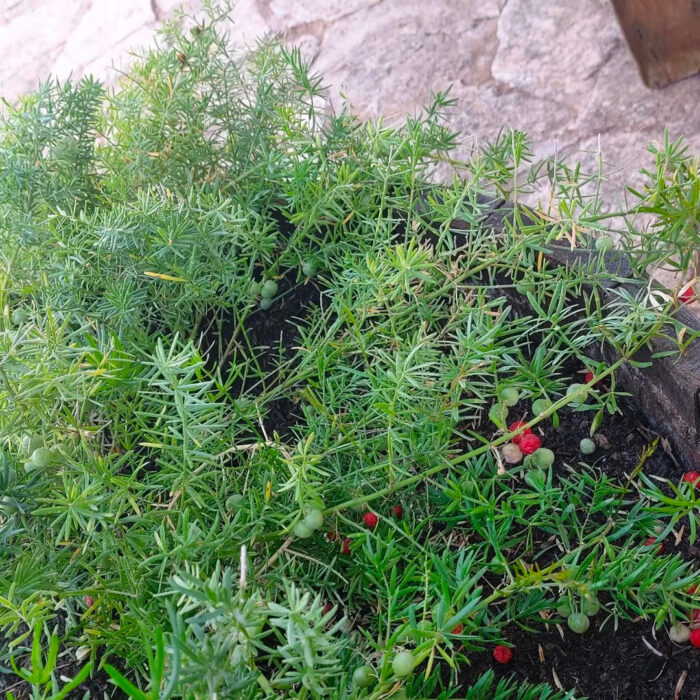
Image credits: alefarinola
There are also some varieties that grow into climbing vines and are popular for landscaping. It also has a miniature variety that can be grown in smaller containers or terrariums.
Caring For an Asparagus Fern
Asparagus ferns are adaptable to different environments. With the proper care, it will produce lush, feathery foliage (and sometimes even small flowers).
Here’s a detailed guide on caring for an asparagus fern:
Light
These plants thrive in indirect sunlight. Place them near a window with filtered light or in a location with dappled sunlight. While they can tolerate some morning sun, it’s essential to protect them from harsh, direct sunlight, as this can scorch their delicate foliage.
Does Asparagus Fern Need Sun or Shade?
If you’re growing an asparagus fern indoors, consider placing it near an east-facing window where it can receive the right amount of gentle light. If you see leggy growth (tall stems with few leaves) and reduced foliage, your plant may need more sunlight.
In their natural habitat, these plants often grow beneath the canopy of big trees, where they receive gentle, filtered sunlight. This means they are well-suited for partially shaded areas. These ferns can also tolerate lower light conditions, making them suitable for areas with reduced natural light. While they are not primarily considered to be low-light plants and may not grow as vigorously in such conditions, they can surely adapt and continue to thrive.
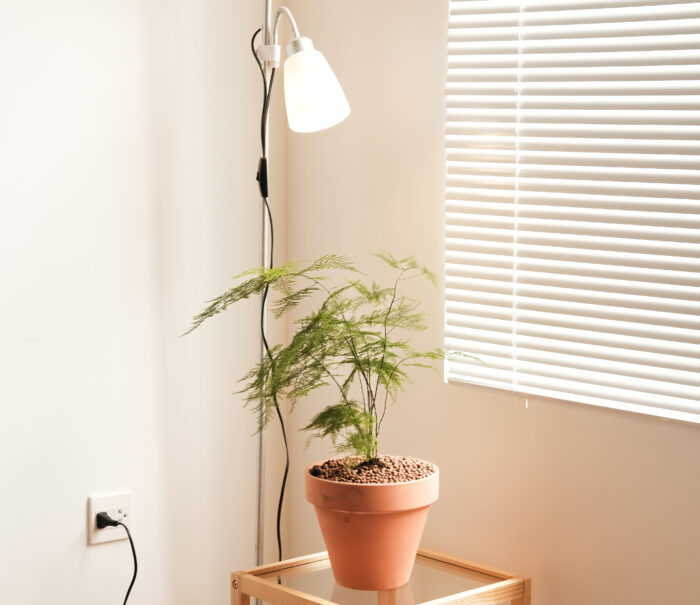
Image credits: Ngân Dương
Soil
Well-draining soil is a key component of asparagus fern care. Choose a high-quality potting mix designed for houseplants. This mix typically includes peat moss, perlite, or sand to ensure proper drainage and aeration. Asparagus ferns prefer slightly acidic to neutral soil with a pH of 6.0 to 7.0.
When planting or repotting your fern, use a pot with drainage holes to prevent water from accumulating at the root level. This is essential because asparagus ferns are sensitive to overwatering, and stagnant water can lead to root rot. Repot your plant every couple of years to refresh the soil and provide more space for growth.
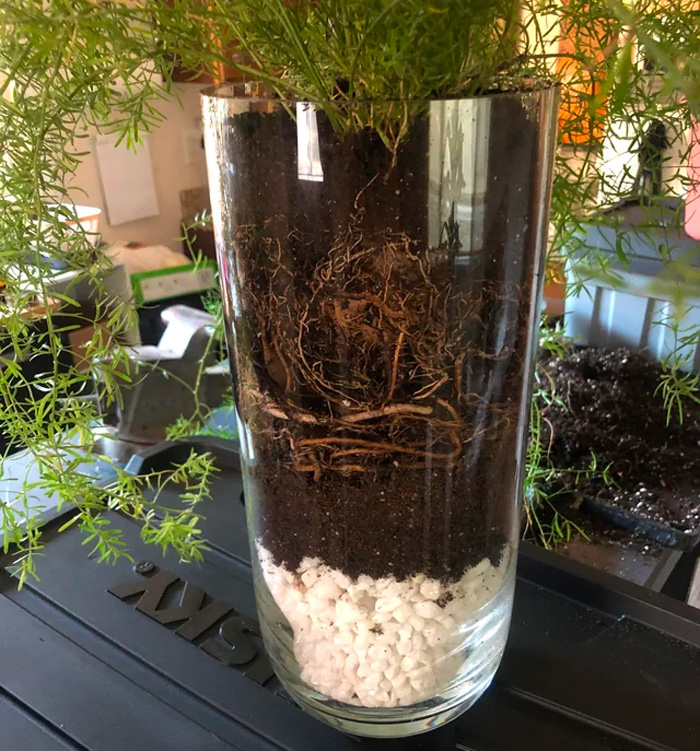
Image credits: Mr. CarlTuna
Temperature
Asparagus ferns thrive in moderate temperatures of 60°F to 75°F. It’s important to protect them from temperature extremes, such as cold drafts and snow, which can damage or kill the plant.
During the winter months, it’s advisable to keep your asparagus fern away from cold windows or heaters that could cause fluctuations in temperature. Maintain humidity by misting the plant occasionally.
Fertilization
Asparagus ferns typically grow in the spring and summer. To ensure a bushy growth, use a balanced, water-soluble fertilizer with a formula like 10-10-10 or 20-20-20. Dilute the fertilizer to half the recommended strength and apply it every four to six weeks. This helps provide the necessary nutrients without overwhelming the plant.
However, you should avoid fertilizing during the dormant season (fall and winter). Over-fertilizing or using a strong solution can lead to salt buildup in the soil and harm the roots.
In addition to these key care elements, regular maintenance tasks such as pruning can help keep your asparagus fern healthy and looking its best. Remove yellow or dead fronds, as well as any leggy growth, to encourage new foliage.
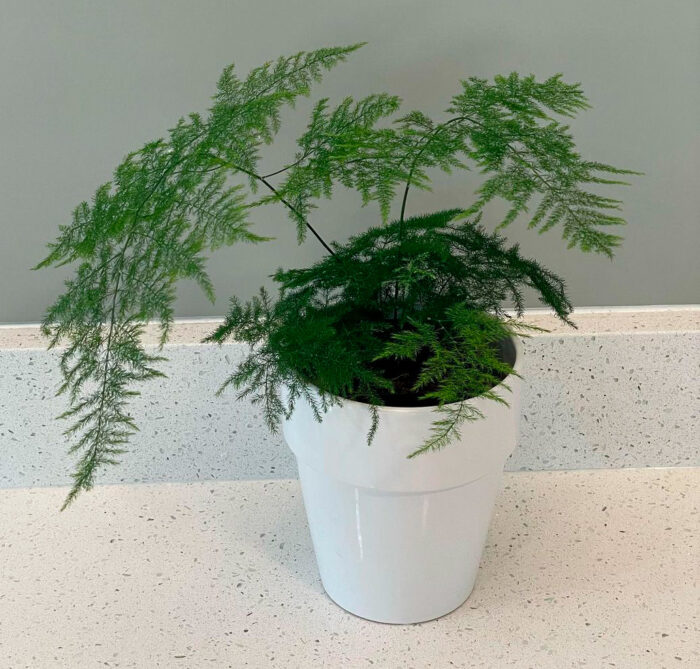
Image credits: peanuts_forest
Propagating Asparagus Fern
Propagating asparagus ferns is a wonderful way to expand your green family or share the joy of growing with friends and fellow plant lovers.
Asparagus Fern Propagation from Seeds
This is a less common method as it can be time-consuming. If you’re up for the challenge, here’s how to propagate asparagus ferns from seeds:
- Collect mature seeds found within their berries. Harvest fully ripe berries, and remove the seeds from the pulp.
- Clean the seeds thoroughly to remove the pulp. Gently rinse them in water and allow them to air dry.
- Plant the cleaned seeds in a well-draining potting mix. Press them lightly into the soil’s surface. Add water, and then cover the container with a plastic wrap or a clear plastic lid to create a mini greenhouse effect.
- Place the container in a warm, bright location with indirect sunlight until the seeds start sprouting.
- Carefully transplant the saplings to individual pots with well-draining soil.
Asparagus Fern Propagation by Division
Dividing mature asparagus ferns is one of the most common methods. It’s a relatively straightforward process and a great way to create new plants from your established ones.
- Choose a well-established asparagus fern with healthy, mature fronds and a well-developed root system.
- Remove the plant from its pot or garden bed. Gently shake or brush off excess soil to expose the root system.
- Look for natural divisions or separate clumps of the plant. Make clean cuts to divide these sections, ensuring that each division has both roots and healthy fronds. Aim for at least a few inches of root and several fronds in each division.
- Plant each division in different containers or garden spots, using a well-draining potting mix. Water thoroughly to settle the soil and encourage the roots to establish themselves.
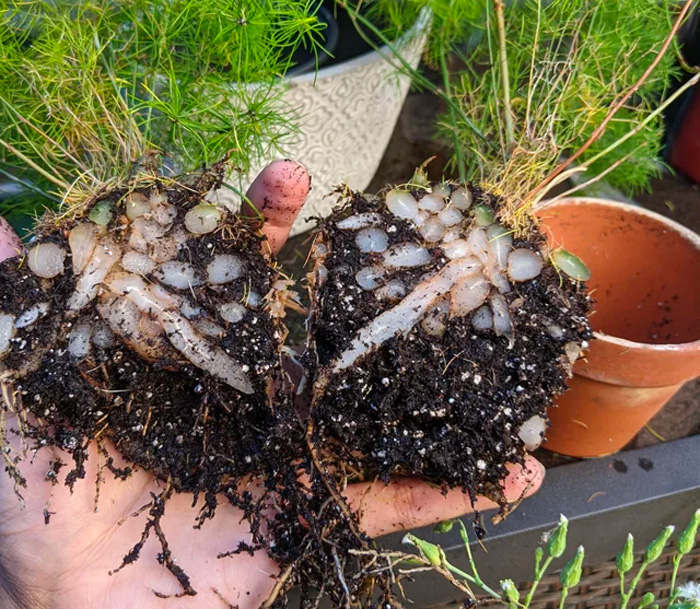
Image credits: hamzascan
How to Grow Asparagus Fern Indoors?
These plants are easy to grow. Select a well-draining soil and a container with drainage holes at the bottom. Asparagus ferns can grow quite large, so choose a container that is large enough to accommodate their growth. Plant your sapling in the potting mix and press it down gently.
Place your new plant near a window with filtered sunlight. Water the plant only when the top inch of the soil feels dry. Be cautious not to let the plant sit in standing water, as this can lead to root rot.
Prune regularly as the plant grows to maintain its bushy appearance.
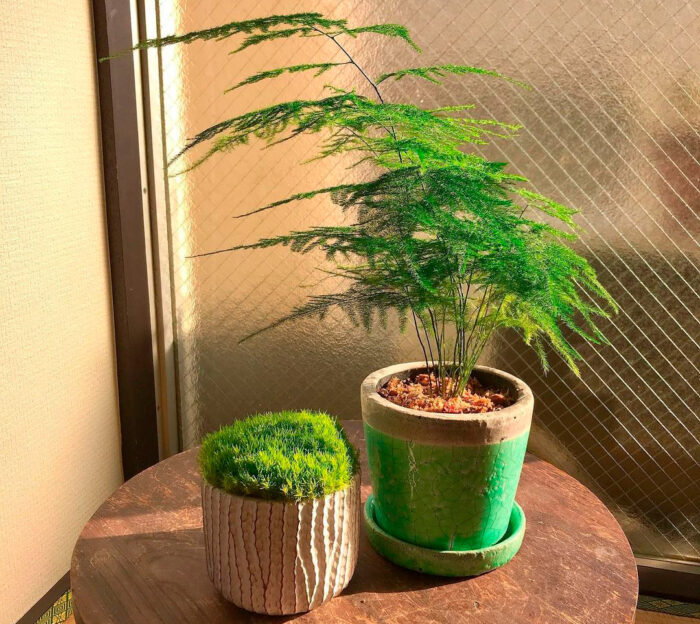
Image credits: sout
Pruning Asparagus Fern
Pruning is an essential part of plant care. It maintains shape, promotes new growth, and prevents it from becoming leggy.
The best time to prune your asparagus fern is in the spring when it begins its active growth phase. This is typically when new shoots start emerging. Avoid heavy pruning in the fall and winter when the plant is in a dormant or slow-growth period.
Watch out for signs of asparagus fern turning yellow. Cut back the discolored or dead fronds at their base to maintain a healthier appearance. If the plant has too many stems or looks crowded, thin it out by pulling out some older stems.
To prune a foxtail asparagus fern, you’ll need to remove the stems at the base. You can also use shears to pinch back overgrown stems.

Image credits: Teona Swift
Common Problems of Asparagus Fern
Asparagus ferns are attractive indoor plants. They usually don’t attract pests, but can be susceptible to several common problems. Here are some of the issues you may encounter:
Overwatering
Asparagus ferns are prone to root rot if the soil remains consistently soggy. To prevent this problem, choose a proper pot and water the plant only when the top inch of the soil is dry. Reduce watering in the winter months.
Yellowing Leaves
If your asparagus fern is turning yellow, it may be a sign of overwatering or inadequate light. Older leaves also naturally turn yellow and brown. Prune the yellowing foliage at the base to maintain a healthier appearance.
Brown Edges
Leaf tips with brown edges indicate low humidity. Asparagus ferns like humid conditions. If the air is too dry, its leaves may turn brown or crispy at the edges. Increase humidity by misting the plant regularly.
Leggy Growth
Leggy growth happens when your plant has tall stems and very few leaves. This occurs when the plant doesn’t receive enough sunlight. If you are growing an asparagus fern indoors, consider moving it closer to a window with filtered sunlight.
Overcrowding
Overcrowding can increase the increase the chances of pests and diseases. Periodically thin out the plant by pruning the older, less healthy stems to promote better airflow.
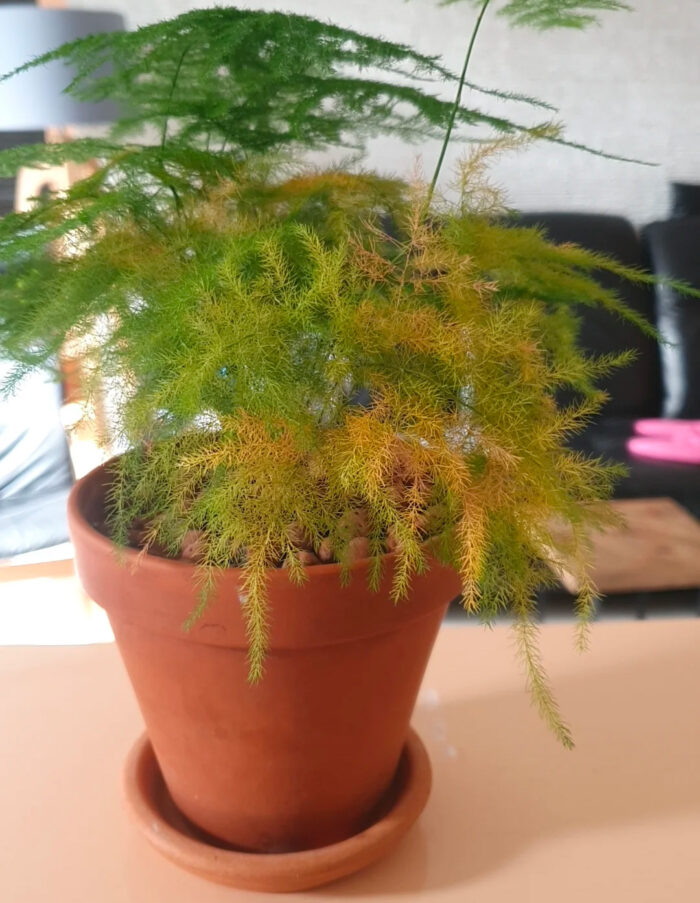
Image credits: Emerson787
Companion Plants
Snake Plant (Sansevieria)
Image credits: KatiaMaglogianni
Peace Lily (Spathiphyllum)

Image credits: Max Williams
Spider Plant (Chlorophytum comosum)
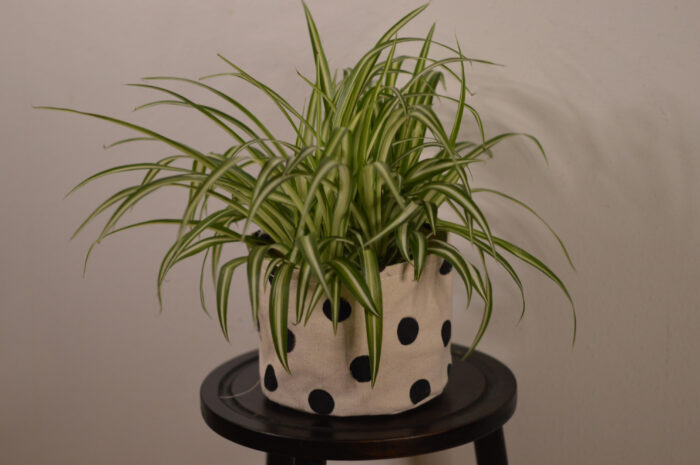
Image credits: Cami Kaos
Calathea (Calathea spp.)
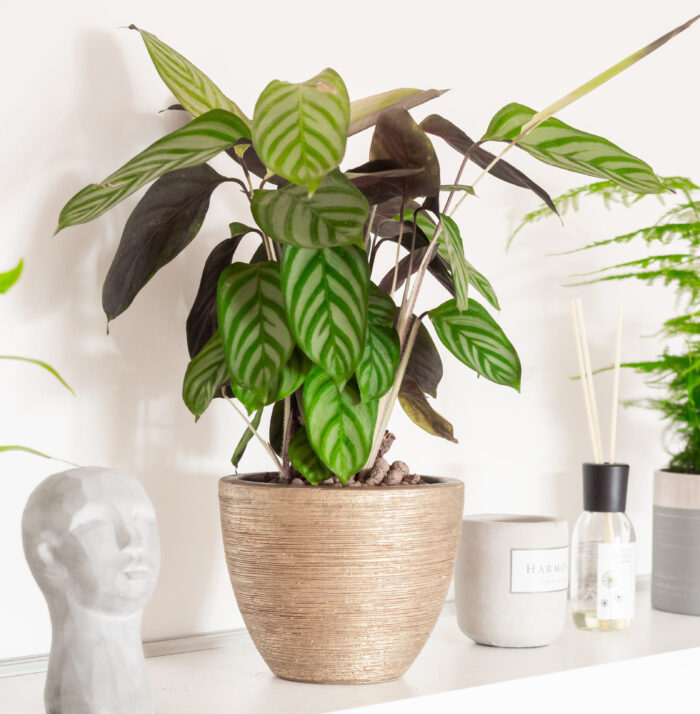
Image credits: Katka Pavlickova
Rubber Plant (Ficus elastica)

Image credits: Anna Nekrashevich
Frequently Asked Questions
Does Asparagus Fern Grow Well Indoors?
Asparagus ferns are houseplants that can thrive indoors with the right care. They need indirect sunlight, so make sure to place them near a window that receives filtered sunlight. They can also adapt to lower light conditions, but they may grow more slowly.
Does Asparagus Fern Come Back Every Year?
Yes. Asparagus ferns are perennial plants and can live for many years with proper care. Repot them in fresh soil every 2-3 years to accommodate their growth.
Should I let My Asparagus Fern Flower?
These plants are primarily grown for their lush foliage rather than their blooms. Occasionally, they produce small, inconspicuous flowers and bright red or orange berries. Many gardeners prefer to trim off the flowers to conserve the plant’s energy for foliage growth and maintain its attractive appearance.

 Dark Mode
Dark Mode 

 No fees, cancel anytime
No fees, cancel anytime 






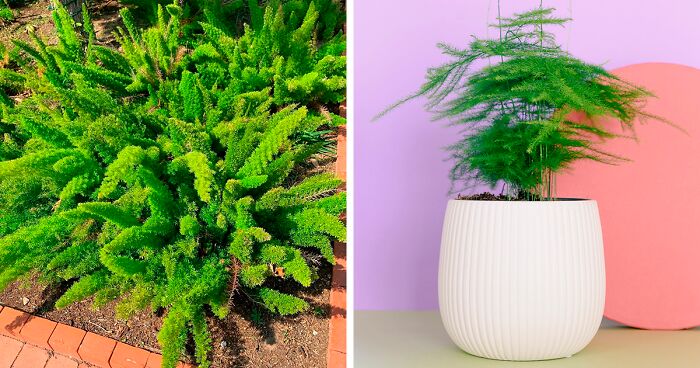
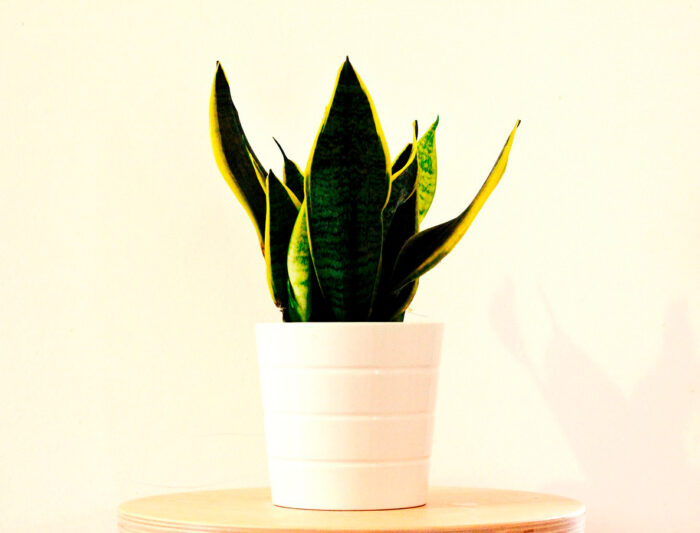















































16
2